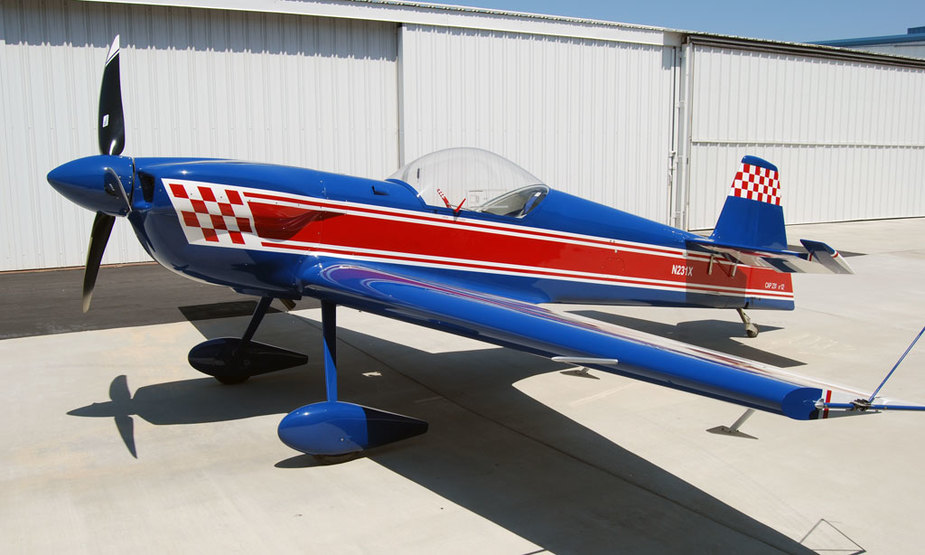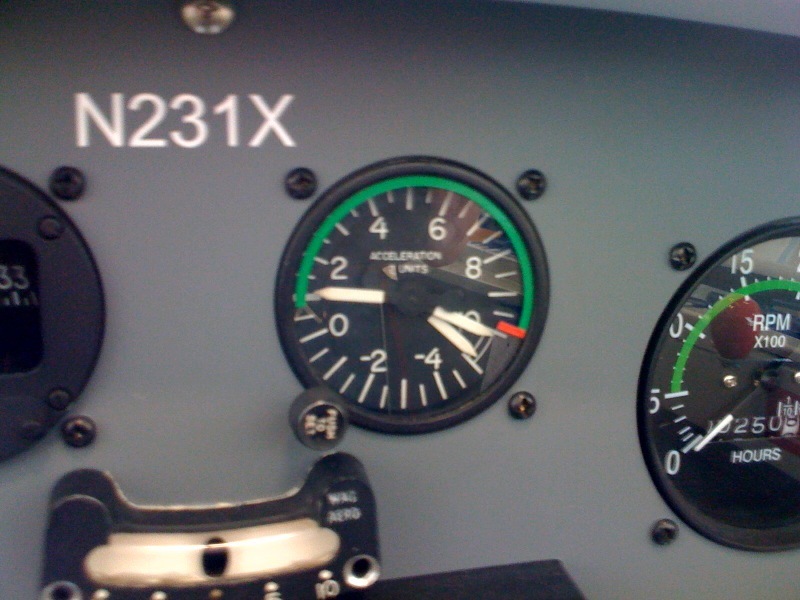We have had many threads here on typical kits taking 1k-3k hours (depending on the type of build process). And it is claimed that this delivers a lot of value.
However it also seems to me that you could spend some large number of hours rebuilding a certified plane which you bought very cheaply, e.g. a post gear up case like this (disregard that this is a twin which needs more paperwork for the pilot, etc)

What would be the relative benefits?
I suppose one issue is that in the latter case the work would need to be done by a licensed engineer – or “under the supervision” of one. Whereas anybody can have a go at building a kit.
You can (or at least we can) re-build a certified plane as an experimental plane. It has to be more than 30 years old, and I think also it has to be off register and deemed uneconomical to restore, but not entirely sure how the authority handles the last.
The main problem as I see it is a certified plane is usually much more complex in the design. Lots of special parts for instance, intricately shaped, that needs large machines to make and will take for ever by hand. A Spitfire is a good example of the opposite, intricate design, but made up of a millions of simple parts that everyone can make with simple tools (except the engine of course).
The main problem is to get parts no matter how you look at it. A kit on the other hand is designed to be put together using simple tools, and it’s also simple to make the parts. Kits with standard aluminium, tube and fabric or wood are all OK, also this special Rutan design. Fiber designs can be more tricky. What to do if the kit manufacturer goes bust and all the molds are lost? Then you also have a big problem.
Cubs will live forever. Almost an entire industry making parts for it. I’m not aware of any other aircraft like that. A C-172 perhaps?
There are a lot of project planes out there which are not wrecks per se as in not involved in an accident. But as we could see in the case of the unfortunate Grumman Traveller, a prop strike can be enough to call up the grim reaper.
I’ve seen several such cases where airplane mechanics took them on as a restauration project and sold them on later. Others which got bought as projects and never got done and resold.
I suppose the main thing is skill and where to work on them. We had the well known case where a M20J was involved in a mid air collision with a glider and suffered damage to the underskin of the wing ripping open one of the fuel tanks, but otherwise the plane was perfectly ok. With a normal maintenance shop the work involved proved to be above insurance value, so it got paid out and sold. It was picked up by someone with his own maintenance shop in Eastern Europe, who came, patched the hole and flew it on one tank to his own shop and restored it (Skin work and tank reseal). It has been resold since and has recently appeared on planecheck again.
In some countries it simply is impossible to restore planes at normal cost, even a gear up can cause a plane to be a total case, which is ridikulous. So it is a chance for people who can do their own work and have the place to do it.
Personally I’d go for a rebuild over building a plane, first of all the certified will likely be easier to fix and once they are, they do not suffer the restrictions of a homebuilt. Also resale is easier usually.
I’m leaning more and more towards homebuilts. Even here in relatively “free” USA, keeping certified airframes in the air legally and constant complying, is a nightmare. And expensive. So many great products around that you could really use and that could really make ownership much cheaper – but you can’t install them legally.
A great example – the Beech community has literally run out of magnesium ruddervators for the V-tails. They’re prone to corrosion. There is no magnesium to be had in that gauge to reskin them. Beech don’t sell them and there are almost none to be had on used market either. There is no aluminium STC in place (as it changes CG too much). So, they literally have to scrap them when corrosion finishes a set, unless they can find a used set. Imagine if that had been an experimental? You’d be out flying the next day with a set of your own carbon fibre ruddervators.
As someone with considerable experience of write off / repaired cars (I did a number for my own use during a mis-spent youth, all of which passed re-registration requirements) I can tell you that they never drive straight, have strange tyre wear behaviours, and leak or whistle in the most perplexing places. Despite that, I was the only student in the parking lot with a year-old car!
Of course aeroplanes are different – aren’t they/
I’d consider a rebuild of a simple type (e.g. tube and fabric) where everything is easily repairable. I’d take on an Auster (they used to be certified) as a project for these reasons. Probably not a Cub – not because they are a bad plane, they aren’t – but because even wrecks of Cubs tend to be overpriced. Anything complex becomes too much of a can of worms where you can run into a showstopping problem that completely writes off anything you’ve spent on fixing it already (e.g. abovementioned Bonanza ruddervators).
Aveling wrote:
Of course aeroplanes are different – aren’t they/
It depends on the damage. After a gear up and the consequent repairs, there is not much reason a plane should not fly straight or have any consequences. And these days even gear ups are often enough to turn planes into project sales as the repair cost of the engine and prop often outdo the insurance cover, totalling the plane. Total rubbish in my view but that is how it is. Same goes for any firewall forward damage such as nose gear collapse, collision with obstacles ruining prop and engine e.t.c these are relatively easy to repair fully.
The moment that there is any sort of distortion on cell or wing, I’d run far and fast, even if they can be put back to specs. But even then, it depends on the airplane. In Mooneys for instance a wing can be changed very easily if you find a donor (usually not a problem for the common types) which then makes even a totalled wing repairable quite easily.
Most projects I see for sale are of the engine/firewall forward or after a gear up type.
I think the opportunity a particular plane presents may be more significant than how and by whom it was originally built… You can also for example rebuild totaled homebuilts or (legalities allowing) rebuild factory built planes into custom built aircraft… I know a long time partnership of two friends that takes on rebuilds of both production and homebuilt types, most often starting with something purchased from an insurance auction. They don’t seem to like life without a project, and its mainly just for fun. Most recently its been a totaled homebuilt Glasair III, now rebuilt and flown in the form of Reno racer with a custom high boost twin turbo engine.
Pictured below is my favorite of their projects, rebuilt from an insurance wreck of a factory built plane, but with a custom built military quality carbon fiber wing much nicer and much lighter than the CF wing that CAP themselves implemented. They built all the wing tooling themselves, a huge job. Also the custom propeller, a machined from solid original design tailwheel assembly, carbon fiber cowlings, the complete landing gear assembly and so on… It was gorgeous and sounded like a racing car with its exotic inconel exhaust headers. Later on they sold the plane and somebody else totaled it again after an aerobatics related engine failure.


Aveling wrote:
Of course aeroplanes are different – aren’t they/
The nicest aeroplane I ever owned was crashed properly 5 times. Even the test pilot at Rogers of Cranfield crashed it.
Mooney_Driver wrote:
I suppose the main thing is skill and where to work on them.
Yep. Skilled sheet metal guys or fabric guys are hard to find and over here cost about 40 euro per hour. If I took an average punter out of a flying club with no prior experience and said “here’s a project Piper Pacer – have at it” it would turn out some dog’s dinner. I have watched LAE’s make the most stupid basic mistakes. Mistiming mags, break wing spars, block fuel vents etc so if they can make a bags of it, then a plane jane PPL has lots of potential to make a bags of it. Multiple engineers inspected a certain home built prior to its first flight, an aeroplane I know intimately. The nose gear could not over centre due to a build flaw and was ready to collapse when I got it. On one of its early flights, the fuel selector came apart halfway across the Irish Sea switching tanks. Nobody should take on any project underestimating the time/skill/cost involved. I’ve brought lots of things back to the dead and don’t plan on doing any more of them. When my Cub comes due it’s new fabric I’ll bring it to someone who does it for a day job. The simple question is “Do you cut your own hair?” – you can I guess, but there’s a man for every job. The science behind it is simple (The Formula: The Universal Laws of Success – Albert-László Barabási)
Where Success can be measured the formula for Sucess = Past Sucess * Fitness for Sucess
If you wanted to dramatically increase your success then partner up/JV with somebody who has past success in aircraft projects and has the skills/mindset/tooling/facility to deliver a finished aircraft.